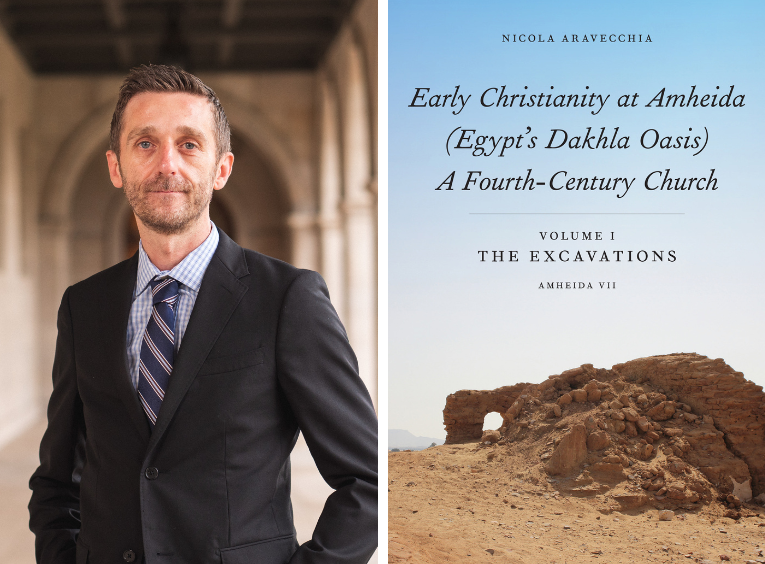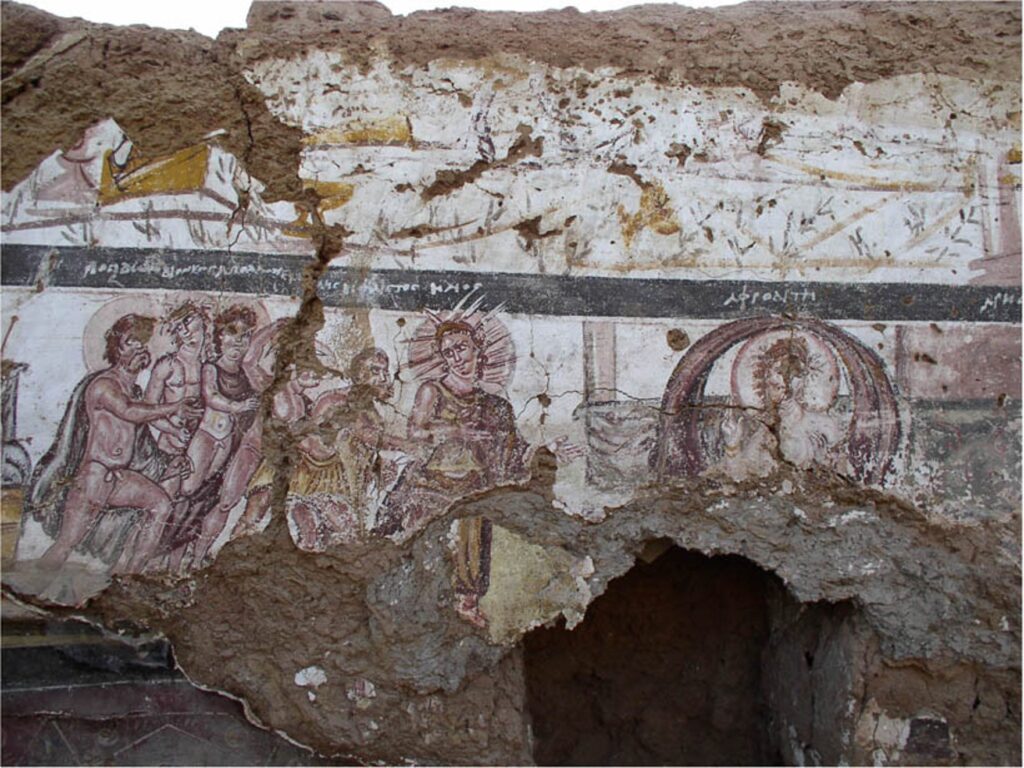A team led by Nicola Aravecchia reveals crucial clues to the early spread of Christianity and life in the Egyptian desert.
Since 2005, Nicola Aravecchia, associate professor of classics, art history, and archaeology, has been working in Egypt’s Western Desert, uncovering the hidden history of Christianity in the Dakhla Oasis. In 2022, he became the archaeological field director at Amheida/Trimithis, a Graeco-Roman city in Dakhla where the team had previously discovered an early Christian church. In September, Aravecchia published “Early Christianity at Amheida (Egypt’s Dakhla Oasis): A Fourth-Century Church.” He joined the Ampersand for a conversation about the book and his decades-long mission to uncover the site.

Can you tell us a bit about the work you’ve been doing at Amheida?
Amheida (ancient Trimithis) is one of Egypt’s most intact archeological sites from the late Roman/early Christian periods. It was abandoned at the end of the fourth century CE for reasons we are still investigating, but the sand that covered the site kept it well preserved.
Our excavations have provided new insights into the spread of Christianity to this geographically remote part of the Roman empire. We’ve also found evidence — a Roman-style bath, a school with Greek rhetorical exercises painted on the wall, paintings with classical themes — that people there adopted the Greek language and had an affinity for Greco-Roman-style culture and customs.
What’s your recent book about?
The book is the final archeological report on the discovery of a church at the site. It is one of the earliest Christian churches found in Egypt, so it provides excellent data about the development of early Christian architecture in the region. The church’s shape, that of a basilica, is evidence of the spread of a set of artistic idioms and architectural types common in Christianity. It shows that communities living at the fringes of the Roman Empires were very much a part of a globalized world.
